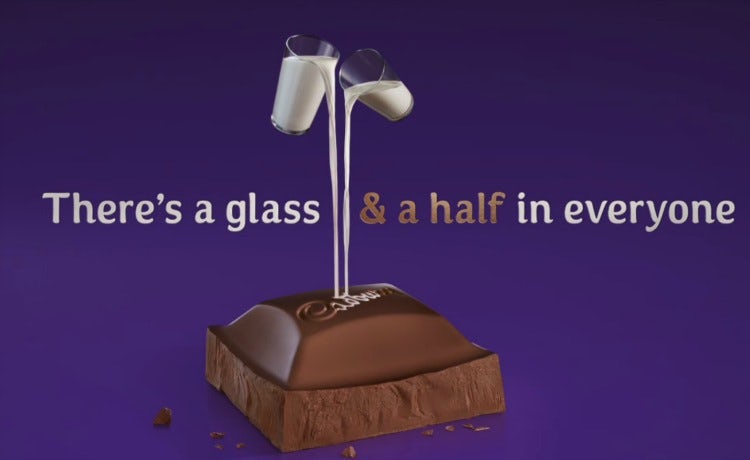Back to the drawing board? Secrets of a successful relaunch

Opinion: Strategy Leaders
Relaunches still come with a degree of risk and not all work out as planned, warns Hearts & Science’s UK chief strategy officer.
The history of adland is crammed with brand relaunches. Recently we’ve had Facebook’s switch to Meta, while perhaps the century’s most impressive reinvention belongs to Lego, which turned enormous debts and a tired brand into phenomenal profits and the establishment of a global superbrand.
However, relaunches — in their various guises — still come with a degree of risk and not all work out as planned. For example, The Post Office’s attempt to become Consignia, or Homebase’s decision to rebrand as Bunnings, were expensive, yet failed to make the required impact. Both were subsequently abandoned.
Get a relaunch right and it can be an excellent way to attract new customers and entice old customers back by helping the brand stand out in a crowded market. If done really well, it will both futureproof a business for a new generation while cementing a legacy.
Relaunches are arguably even harder to pull off now than in the past. This is down to various factors: notably, younger audiences are tougher to engage; media has become highly fragmented; we’re still knee-deep in a cost-of-living crisis; and growth has stalled in many markets.
All of these factors actually make the idea of the ‘brand’ even more important. But that added pressure doesn’t make any credible strategy to revitalise a business any easier!
Consequently, it’s important to approach relaunches by establishing some basic principles.
Drawing on a combination of our own analysis of Hearts & Science and Omnicom Media Group clients, as well as looking closely at the IPA Databank, it’s possible to identify five factors that have tended to define successful relaunches.
1. Start with the audience – and get out of London
Switch the starting focus of any relaunch from simply communicating the features and benefits of the brand to better understanding consumer motivations and barriers. These can be complex and are prone to a wide range of shifting cultural trends.
Contemporary audiences, especially younger ones, demand a lot from brands — diversity, ‘purpose’, responsibility, social proof, authenticity, environmental and social action, and so on.
Meanwhile, older audiences tend to place customer service, personal contact, and traditional communication in higher esteem. Once they feel they are heard and valued by a brand, they are usually better motivated to share that experience and repeat it.
These are broad brush strokes but still pose unique challenges that require real insight and nuance to get right.
It’s also worth revisiting the lessons I shared in last month’s column: “marketers who want to succeed in the UK need to better understand the lives of people outside of London, and factor in the unique experiences, attitudes, and needs of these communities.”
2. Ask what business are we in?
Many brands have spent so many years with a revolving door of CMOs and campaigns that they have simply drifted from their original reason for existing.
When I did the IPA Excellence Diploma several years ago, BBH co-founder Nigel Bogle shared something about relaunching brands that has stayed with me: “Go back to what made the brand great in the beginning and make it relevant to today.”
This can also mean thinking broadly about where consumers are going, rather than merely where they are, as Theodore Levitt said of the US rail industry: “They let others take customers away from them because they assumed themselves to be in the railroad business rather than in the transportation business. The reason they defined their industry incorrectly was that they were railroad oriented instead of transportation oriented; they were product oriented instead of customer oriented…”
Cadbury’s IPA Effectiveness Grand Prix-winning “There’s a Glass & a Half in Everyone” relaunch campaign is a master class in bringing together legacy with the needs of its core family audience. It built on the core feature of its product — that it generously contains a glass-and-a-half of milk — and the roots of the organisation, founded on clean-living, Quaker values. The ads led to a 9% increase in value sales, and unprecedented improvement in ROI and growth.
3. Simplified and consistent messages
One way to overcome complexity — and a highly beneficial strategy in its own right — to deploy consistent and straightforward communications. This becomes even more important if changes to an audience’s comprehension of a brand are part of a relaunch, rather than just building awareness.
For example, fabric-of-the-nation brands McDonald’s and Cadbury’s both factored contemporary audience attitudes into their relaunches. Correspondingly, each chose to adopt humble, authentic, and simple messaging.
This approach certainly adheres to the best practice outlined by System1’s Orlando Wood, who argues fragmented, abstracted and disembodied features reduce the effectiveness of brand communications.
Furthermore, McDonald’s and Cadbury’s also focused on one task at a time, adopting a long-term strategy (Cadbury’s five-plus years and McDonalds 15+ years), and both employed partnerships and non-traditional activations to provide proof points for their messaging.
4. Don’t overlook your most distinctive assets
In competitive markets, it is crucial for brands seeking to revitalise themselves to differentiate. One way to do this is to offer distinctive benefits that no other brand can offer. For example, Apple’s products are known for their sleek design and user-friendly interface. These attributes make Apple products stand out from the competition and make the brand more appealing to consumers.
Another well-established strategy, especially in commoditised categories, is to use highly distinctive brand assets to help create a brand identity. They can include logos, slogans, typefaces, colours, packaging, even sounds and smells. When used effectively, these assets deliver a strong brand identity that is instantly recognisable to consumers.
It’s worth maintaining the most established brand messages and signifiers. Recent examples include Morrisons bringing back “more reasons to shop at Morrisons” and Hoffmeister bringing back “George the Bear”. Sometimes it’s easier to relaunch using a previously used but fondly remembered asset than to create a new one.
5. Aim for broad reach combined with the right amount of attention
The fifth success factor is ensuring your media strategy employs broad reach for long-term growth. It’s important to consider the impact of advertising diminishes after just one exposure and to bear in mind the advice of the Ehrenberg-Bass Institute — not everyone is in the category at any one time.
The reach strategy needs to be combined in the media plan with what we know about the role of attention. Planning for low and high involvement requires more nuanced thinking. This may mean a very different creative and format strategy with shorter, innovative, high impact media placements, but in combination with traditional relaunch behaviours of longer, higher dwell time formats.
Risks
Get a relaunch right and the effects can be transformative. Get it wrong, however, and there are myriad potential fallouts: a loss of loyalty, a change in how a brand is liked or perceived, and an impact on consumers’ willingness to pay a certain price. Furthermore, mishandled rebrands can negatively impact a brand’s search engine rankings, and lead to negative publicity.
The biggest risk is simply failing to learn from how others have undertaken relaunches. Any kind of brand overhaul is going to be complex, expensive and in most instances will require patience. So, it really does make commercial sense to pay close attention to what has worked well — and not — in previous relaunches.
Chief among the watch-outs is the potential to damage hard-earned brand equity. If a business has built up significant brand recognition over time, a sudden relaunch (or, more likely, a full rebrand) can confuse customers.
A final point to make is that risk factors don’t just lie with consumers, change can also be met with employee resistance. This means any relaunch strategy must include internal, as well as external comms.
 Simon Carr is chief strategy officer at Omnicom media agency Hearts & Science
Simon Carr is chief strategy officer at Omnicom media agency Hearts & Science
Strategy Leaders: The Media Leader‘s weekly bulletin with thought leadership, news and analysis dedicated to excellence in commercial media strategy.
Sign up for free to ensure you stay up to date every Thursday.



